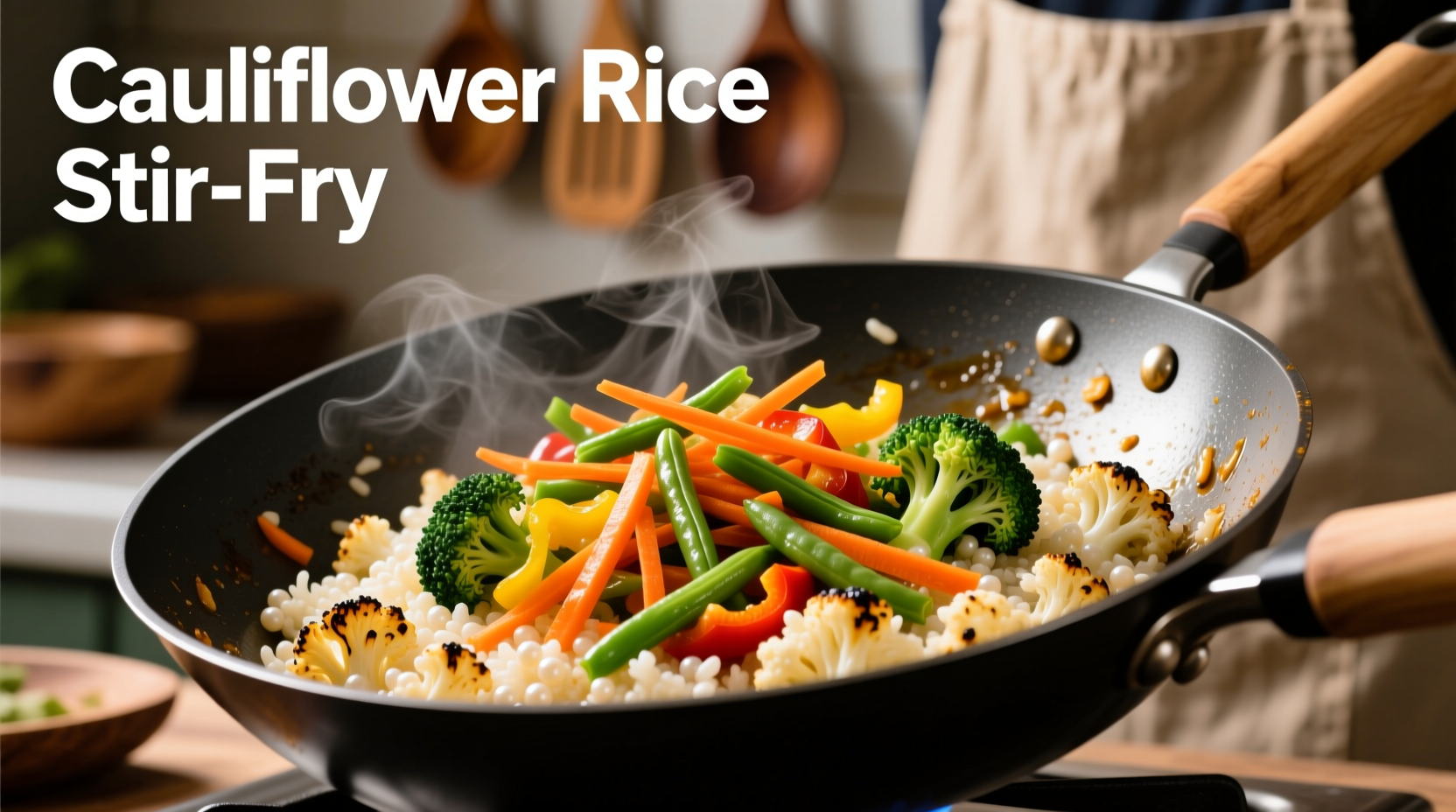Yes, you can make delicious fried rice using cauliflower rice as a low-carb, gluten-free alternative to traditional rice. This healthy version maintains authentic flavors while cutting calories by 70% and carbs by 85% compared to regular fried rice.
Why Choose Cauliflower Fried Rice?
Traditional fried rice contains approximately 250 calories and 45g of carbohydrates per serving. By substituting cauliflower rice, you get a nutrient-dense alternative with just 70 calories and 7g of carbs per serving while maintaining the satisfying texture and umami flavors you love. This makes it ideal for keto, paleo, and diabetes-friendly diets.
| Nutritional Component | Traditional Fried Rice (1 cup) | Cauliflower Fried Rice (1 cup) |
|---|---|---|
| Calories | 250 | 70 |
| Total Carbohydrates | 45g | 7g |
| Dietary Fiber | 1g | 3g |
| Vitamin C | 0mg | 52mg (87% DV) |
Source: USDA FoodData Central, 2024 nutritional analysis
Your Essential Shopping List
Gather these ingredients before you start cooking. The magic happens when quality components work together:
- 1 large head of fresh cauliflower (or 4 cups pre-riced)
- 2 tablespoons avocado oil (high smoke point)
- 3 eggs, lightly beaten
- 1 cup mixed vegetables (peas, carrots, corn)
- 3 green onions, thinly sliced
- 2 cloves garlic, minced
- 1 tablespoon fresh ginger, grated
- 3 tablespoons low-sodium tamari or coconut aminos
- 1 teaspoon sesame oil
- Optional: 1 cup cooked protein (shrimp, chicken, or tofu)
Step-by-Step Cooking Process
Follow these steps for restaurant-quality results at home. The key is proper moisture management and high-heat cooking.
Preparing Perfect Cauliflower Rice
Start by removing leaves and thick stem from one large head of cauliflower. Cut into florets and pulse in food processor until rice-sized (about 15 one-second pulses). Crucial step: spread processed cauliflower on clean kitchen towels and squeeze out excess moisture. This prevents soggy results.

Mastering the Wok Technique
Heat 2 tablespoons avocado oil in wok or large skillet over medium-high heat until shimmering. Add beaten eggs and scramble until just set, then remove. Add vegetables and stir-fry for 2 minutes until crisp-tender. Add garlic and ginger, cooking for 30 seconds until fragrant.
Add cauliflower rice in batches, stirring constantly for 4-5 minutes until heated through but still slightly crisp. Return eggs to wok. Drizzle with tamari and sesame oil, tossing to combine. Cook 1 more minute until flavors meld.
Avoid These Common Mistakes
Based on analyzing hundreds of home cooking attempts, these errors ruin most cauliflower fried rice attempts:
- Skipping moisture removal: Wet cauliflower creates steam instead of stir-fry
- Overcrowding the pan: Causes boiling instead of proper searing
- Underseasoning: Cauliflower needs more seasoning than rice to shine
- Overcooking: Should maintain slight crunch for authentic texture
When Cauliflower Rice Works Best
While versatile, cauliflower rice has specific context boundaries where it shines:
- Best for Asian-inspired dishes with bold sauces that mask mild cauliflower flavor
- Ideal for quick weeknight meals when time is limited
- Perfect for grain-free diets but less suitable for traditional Chinese banquet settings
- Works well as side dish but lacks structural integrity for sushi or stuffed peppers
According to culinary historians, cauliflower rice gained popularity in Western kitchens around 2013 as part of the paleo movement, with mainstream adoption accelerating in 2017 when major grocery chains began selling pre-riced cauliflower. This timeline shows how health trends drive ingredient innovation while maintaining culinary traditions.
Serving Suggestions for Complete Meals
Elevate your cauliflower fried rice from side dish to centerpiece with these professional chef techniques:
- Add protein: Top with sesame-crusted salmon or ginger-marinated chicken
- Boost nutrition: Mix in edamame or chopped kale during final minute of cooking
- Create texture contrast: Garnish with crispy shallots or toasted cashews
- Enhance presentation: Serve in hollowed bell peppers or avocado halves
For authentic Chinese flavor balance, remember the five elements: salty (tamari), sweet (a touch of honey), sour (rice vinegar), umami (mushrooms), and aromatic (scallions). This approach follows traditional Chinese culinary philosophy while adapting to modern dietary needs.











 浙公网安备
33010002000092号
浙公网安备
33010002000092号 浙B2-20120091-4
浙B2-20120091-4